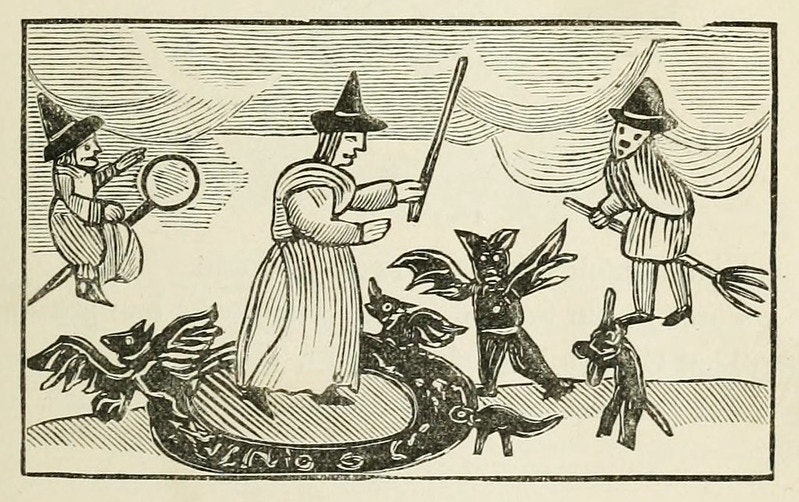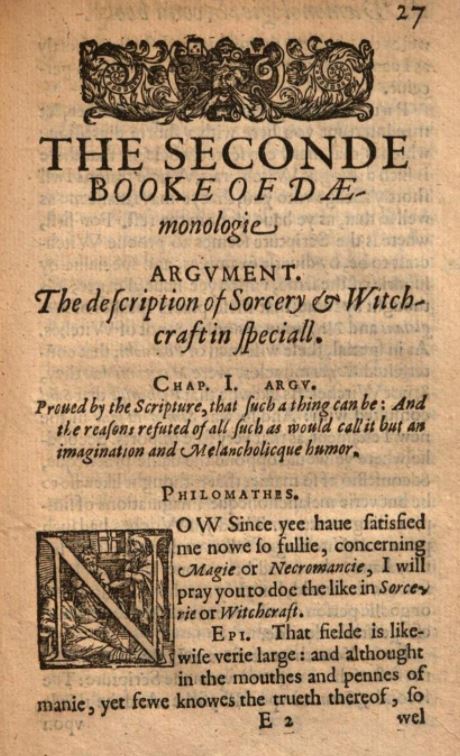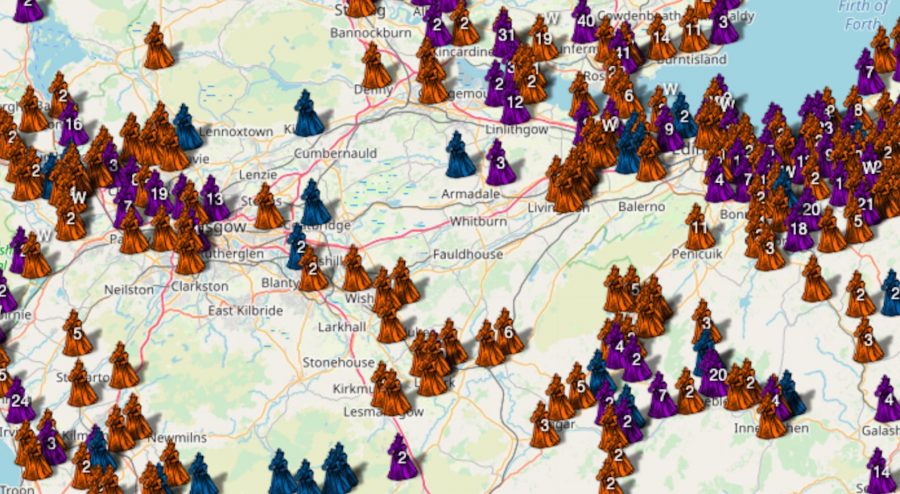 Scotland’s witches are on a mission to exonerate women and men targeted in witch hunts during the 16th through 18th centuries. The group Witches of Scotland is calling on the country’s leaders to issue a wide sweeping legal pardon, an apology and national monument for the thousands of people—mostly women—that were convicted of witchcraft and executed between 1563 and 1736 in Scotland. First, Minister Nicola Sturgeon, leader of the Scottish National Party, voiced support for the bill in late December 2021, signaling that the country’s government may agree to issue a formal apology in the coming months.
Scotland’s witches are on a mission to exonerate women and men targeted in witch hunts during the 16th through 18th centuries. The group Witches of Scotland is calling on the country’s leaders to issue a wide sweeping legal pardon, an apology and national monument for the thousands of people—mostly women—that were convicted of witchcraft and executed between 1563 and 1736 in Scotland. First, Minister Nicola Sturgeon, leader of the Scottish National Party, voiced support for the bill in late December 2021, signaling that the country’s government may agree to issue a formal apology in the coming months.
You can read a great article about this petition on the Smithsonian Magazine online, or watch four-time Michigan Notable Book Award winner and lawyer Steve Lehto summary of the case on YouTube.

The Scottish witch craze kicked off in 1590, with the trial of a group of mostly women from East Lothian. They were accused of meeting with the Devil and conjuring up storms to destroy James VI on his return from Denmark with his bride, Anne. The King became increasingly obsessed with the subject, and composed his own book Daemonologie, which set the standard for how to conduct supernatural investigation and arguments to be used in court cases for several centuries. These true life events are part of the plot of the popular book (and TV) series A Discovery of Witches by Deborah Harkness.
How does this potential pardon impact your genealogy research?
Documentation of trials from the 16th to 18th centuries can be quite full and rich in details. One example is a letter dated June 29, 1649 from a minister of a Scottish church (where there were lots of witch trials) complaining that Parliament was not doing enough to help him prosecute a group of women who were suspected of witchcraft. These women and their husbands are named in the document. You can read the letter written in secretary hand with an accompanying translation on the National Archives’ (Kew) website.
Marion Shenon wife to John Jameson of Drochdoill, Jeneat McKenon wife to Alexander Lowlie in Balmurrey, Africt Blam, wife to John McLung in Kirkibae, Marion Russell in Glenluce, and Isabel Biggam, in the parish of Stranrawer, which persons are suspected are guilty of the crime of witchcraft
The document not only provides the names of the individuals accused, it includes geographical locations in and around the parish. It is important to remember, Scots tradition did not require women to take their husband’s surname upon marriage. This is one of the many advantages of Scottish genealogy research. Also, the use of secretary handwriting from the time period may lead to some confusion as to the spelling of an ancestors first and last name. I highly recommend completing BYU’s free Script Tutorials online to become better acquainted with this essential skill.
However, just with modern day trials, not everyone accused of the same crime will generate the same amount of celebrity. Also, it is more than likely witchcraft and other otherworldly crimes were underreported or handled outside of the legal system, which may not generate the same amount of paperwork and surviving records.
The bulk of records you can find online right now are through trial transcripts and court account, which were of huge interest to readers. Witchcraft trials were the true crime of their day and were well-read throughout the country and throughout western Europe. Here are just a few of the cases you can read about online:
- Trials for Witchcraft, Sorcery, and Superstition in Orkney complied by James Maidment
- Newes from Scotland, Declaring the Damnable Life and Death of Doctor Fian, a Notable Sorcerer, who was Burned at Edinburgh in January Last, 1591 (reprinted 1816)
- An Account of the Most Remarkable Trials and Executions Which Took Place in Scotland for Above 300 Years a broadside by John Muir (circa 1830)
- Domestic Annals of Scotland from the Reformation to the Revolution compiled by Robert Chambers (Multiple volumes including numerous witchcraft cases, printed 1861)
- Remarkable Trial of Jean Maxwell, the Galloway Sourceress (1805)
- Satan’s Invisible World Discover’d, or, The History of Witches and Warlocks (1807)
- List of All the Criminals Who Have Been Executed in Glasgow for the Last 62 Years: with their Names and Crimes, and the Place and Time of their Suffering. Likewise, a List of the Names of a Great number of Criminals, Both Male and Female, who have been Executed, Burned, &c. in Different Parts of Scotland, for Upwards of the Last 200 Years, for the Crimes of Blasphemy, Witchcraft, Murder, Incest, Adultery, Parricide, Treason, &c. &c by John Muir (1828)
A visual way to see where and when trials were reported is by visiting the The Survey of Scottish Witchcraft online. The site provides a searchable database, interactive graphs and the opportunity to download the entire database to conduct your own detailed analysis. What I found the most helpful was the mapping tool, which allows you to see where accusations and trials were held and can break down information by decade to see how content of each accusation changed over time.

There are additional resources to consult online when researching witchcraft in England, Ireland, Wales and Scotland during the early modern era:
- National Archives in Kew has a wide reaching collection of manuscripts and resources
- National Archives of Scotland Recommend Reading Book List
- Trial of the Pendle Witches documentary on YouTube
- The Cornell University Witchcraft Collection
- Christopher Newport University Primary Sources: Witches and Witchcraft
The interest in witchcraft and otherworldly lore has proven to be persistent through the present day. Recent writers continue to produce supernatural stories which may or may not include brooms, pointy hats, heeled boots and eye of newt.
Some great YA book recommendations you can pick up at our library right now include The Witch of Blackbird Pond by Elizabeth George Speare, The Witches by Roald Dahl and The Last Apprentice series by Joseph Delaney.
For adults, you will want to pick up a copy of Practical Magic by Alice Hoffman, Good Omens by Neil Gaiman and Terry Pratchett and The Witch’s Daughter by Paula Brackston.
Stay spooky and see you at the library!
Debra
